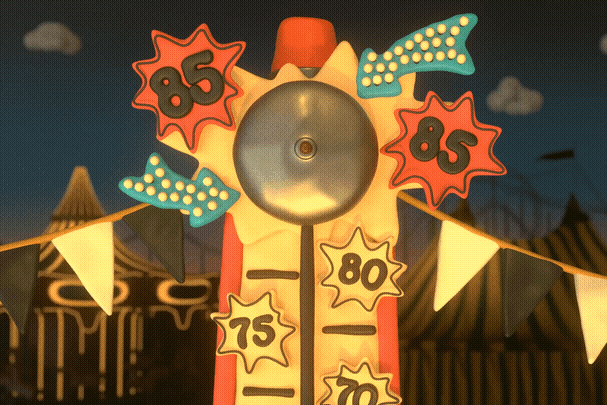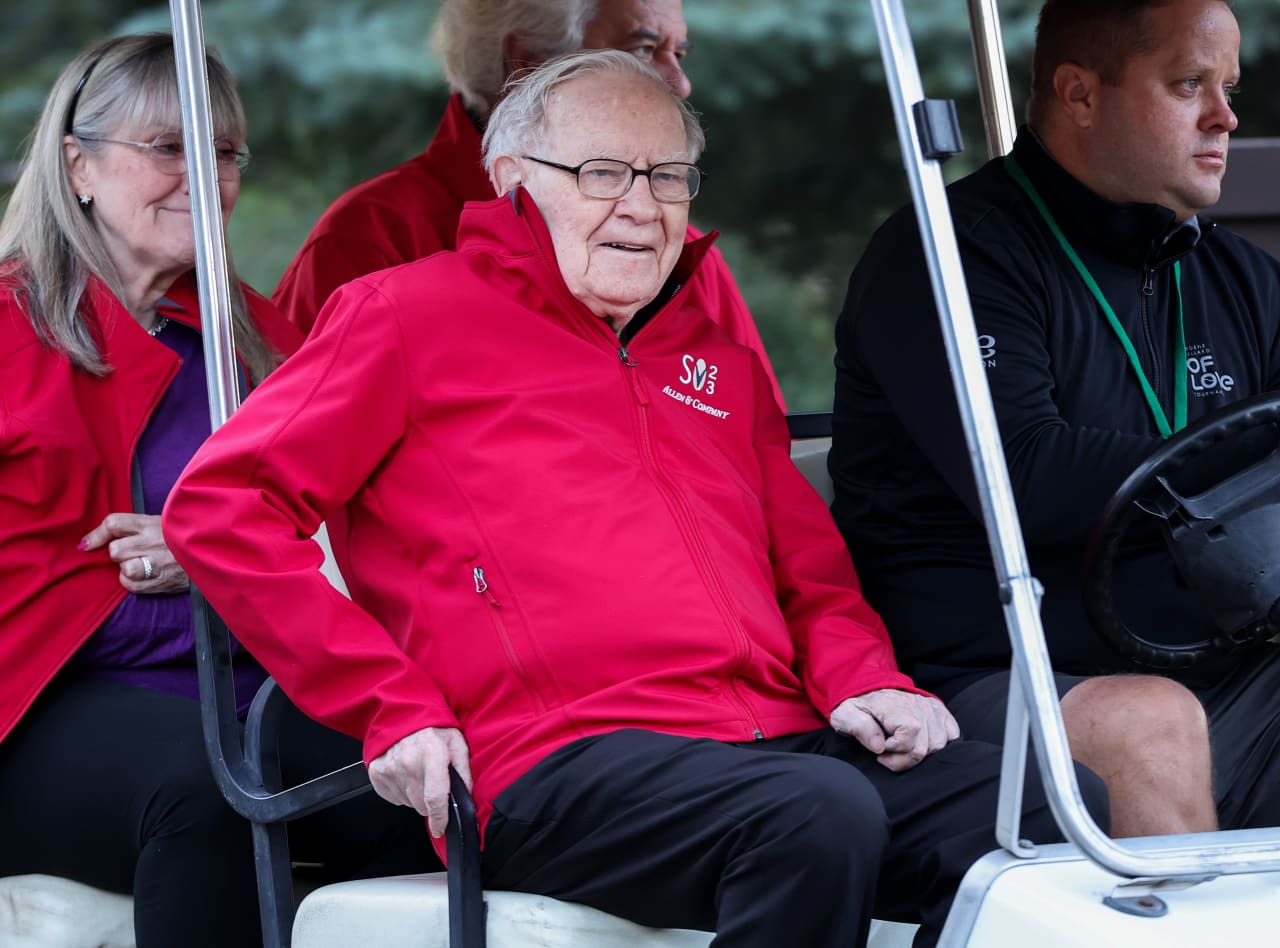Try Hard, but Not That Hard. 85% Is the Magic Number for Productivity.
To do the best work of your life, take it down a notch
Are you giving it your all? Maybe that’s too much.
So many of us were raised in the gospel of hard work and max effort, taught that what we put in was what we got out. Now, some coaches and corporate leaders have a new message. To be at your best, dial it back a bit.
Trying to run at top speed will actually lead to slower running times, they say, citing fitness research. Lifting heavy weights until you absolutely can’t anymore won’t spark more muscle gain than stopping a little sooner, one exercise physiologist assured me.
The trick—be it in exercise, or anything—is to try for 85%. Aiming for perfection often makes us feel awful, burns us out and backfires. Instead, count the fact that you hit eight out of 10 of your targets this quarter as a win. We don’t need to see our work, health or hobbies as binary objectives, perfected or a total failure.
“I already messed it up,” Sherri Phillips would lament after missing one of her daily personal goals.
Last year, the chief operating officer of a Manhattan photography business began tracking metrics like her sleep quality and cardio time on an elaborate spreadsheet. It was only after she switched to aiming for 85% success over the course of a week that she stuck with her efforts, instead of giving up when she missed a mark.
“It’s a spectrum of success,” she says.
The benefits of doing less
Once upon a time, bosses who preached total optimization might actually achieve it, says Greg McKeown, a business author and podcaster who’s written about why 85% is a sweet spot.
More recently, the available comparison points and choices in our lives have exploded. We read about someone else’s dream job on LinkedIn, watch a mom prepare a perfect lunch for her kid on TikTok, then click over to scroll through thousands of products on Amazon. Constant comparison often means no end result ever feels good enough. Even searching for, say, the best umbrella to buy can become a time-sucking quest.
“We will drain ourselves,” McKeown says. “It’s a bad strategy. It costs too much.”
Test out doing a little less. If you turn in that project without the extra slide deck, “Does anybody care?” McKeown asks. If you make a decision with only 85% of the information in hand, what’s the result? Notice the time you get back for other things.
“There’s a lot of inconsequential stuff that goes into going 100%,” says Steve Magness, an exercise physiologist who coaches executives and athletes on performance. When we care too much, even minutiae starts to seem “like an existential crisis,” he adds.
Sometimes, the harder we try, the worse we get, injuring ourselves or choking under pressure, Magness says. Quit while you’re ahead, and the sense that your whole self-worth isn’t wrapped up in this one moment can actually make you more likely to nail it.
Relaxed confidence
The effortless success so many of us crave often comes from a relaxed confidence and a tolerance for ambiguity.
When economist Krishnamurthy V. Subramanian gave one of his first major addresses to the media as chief economic adviser for the Indian government, he prepared but tried not to overthink it.
“It’s that Goldilocks balance,” says Subramanian, now an executive director at the International Monetary Fund based in Washington, D.C. “85% is not slacking.”
When two of his slides wouldn’t cue up at the last minute, he pushed away his nerves and reminded himself the speech would be OK even if it wasn’t perfect.
“I’ll wing it,” he told himself calmly. The presentation went just fine.
Just tough enough
Dialling in on the sweet spot of 85% can help us grow. In a 2019 paper, researchers used machine learning to try to find the ideal difficulty level to learn new things. The neural network they created, meant to mimic the human brain, learned best when it was faced with queries set to 85% difficulty, meaning it got questions right 85% of the time.
If a task is too hard, humans get demotivated, says Bob Wilson, an author of the study and associate professor of psychology and cognitive science at the University of Arizona. “If you never make any errors, you’re 100% accurate, well, you can’t learn from the mistakes.”
Ron Shaich, a founder and former chief executive of restaurant chain Panera, is skeptical of people who hit 100% on bonus targets or sales projections. He wonders if the goals are too low. They should be ambitious enough that you won’t always get there, he says.
Presiding over Panera’s quarterly earnings reports, he’d aim to exceed guidance eight out of 10 times. The same went for big goals at the company.
Now an investor, board member and author of a coming business book that stresses 80% equals success, Shaich is convinced most companies don’t even hit that number.
“They all talk about what they’re going to get done. Then they don’t do it,” he says. Reach 80% and, “you’re doing great.”
Know when to stop
Years ago, as a consultant at Bain, Grace Ueng learned the “80-20 rule.” The idea was to stop once you were 80% complete on a project, she says. That first burst of work often contained the real meat of the project.
Now a leadership coach and strategy consultant, Ueng recently took up piano. She practiced for hours and grimaced when she performed for her music group. Then she started doing more targeted exercises, like tackling small chunks of a piece instead of running through the whole thing again and again.
Before a recent performance, she read a book and went to church instead of putting in extra hours at the piano.
When it was time to perform, she played well—and actually enjoyed it.
“You have to have the wisdom,” she says, “to know when to stop.”
 Copyright 2020, Dow Jones & Company, Inc. All Rights Reserved Worldwide. LEARN MORE
Copyright 2020, Dow Jones & Company, Inc. All Rights Reserved Worldwide. LEARN MORE
This stylish family home combines a classic palette and finishes with a flexible floorplan
Just 55 minutes from Sydney, make this your creative getaway located in the majestic Hawkesbury region.
Continued stagflation and cost of living pressures are causing couples to think twice about starting a family, new data has revealed, with long term impacts expected
Australia is in the midst of a ‘baby recession’ with preliminary estimates showing the number of births in 2023 fell by more than four percent to the lowest level since 2006, according to KPMG. The consultancy firm says this reflects the impact of cost-of-living pressures on the feasibility of younger Australians starting a family.
KPMG estimates that 289,100 babies were born in 2023. This compares to 300,684 babies in 2022 and 309,996 in 2021, according to the Australian Bureau of Statistics (ABS). KPMG urban economist Terry Rawnsley said weak economic growth often leads to a reduced number of births. In 2023, ABS data shows gross domestic product (GDP) fell to 1.5 percent. Despite the population growing by 2.5 percent in 2023, GDP on a per capita basis went into negative territory, down one percent over the 12 months.
“Birth rates provide insight into long-term population growth as well as the current confidence of Australian families,” said Mr Rawnsley. “We haven’t seen such a sharp drop in births in Australia since the period of economic stagflation in the 1970s, which coincided with the initial widespread adoption of the contraceptive pill.”
Mr Rawnsley said many Australian couples delayed starting a family while the pandemic played out in 2020. The number of births fell from 305,832 in 2019 to 294,369 in 2020. Then in 2021, strong employment and vast amounts of stimulus money, along with high household savings due to lockdowns, gave couples better financial means to have a baby. This led to a rebound in births.
However, the re-opening of the global economy in 2022 led to soaring inflation. By the start of 2023, the Australian consumer price index (CPI) had risen to its highest level since 1990 at 7.8 percent per annum. By that stage, the Reserve Bank had already commenced an aggressive rate-hiking strategy to fight inflation and had raised the cash rate every month between May and December 2022.
Five more rate hikes during 2023 put further pressure on couples with mortgages and put the brakes on family formation. “This combination of the pandemic and rapid economic changes explains the spike and subsequent sharp decline in birth rates we have observed over the past four years,” Mr Rawnsley said.
The impact of high costs of living on couples’ decision to have a baby is highlighted in births data for the capital cities. KPMG estimates there were 60,860 births in Sydney in 2023, down 8.6 percent from 2019. There were 56,270 births in Melbourne, down 7.3 percent. In Perth, there were 25,020 births, down 6 percent, while in Brisbane there were 30,250 births, down 4.3 percent. Canberra was the only capital city where there was no fall in the number of births in 2023 compared to 2019.
“CPI growth in Canberra has been slightly subdued compared to that in other major cities, and the economic outlook has remained strong,” Mr Rawnsley said. “This means families have not been hurting as much as those in other capital cities, and in turn, we’ve seen a stabilisation of births in the ACT.”
This stylish family home combines a classic palette and finishes with a flexible floorplan
Just 55 minutes from Sydney, make this your creative getaway located in the majestic Hawkesbury region.






















